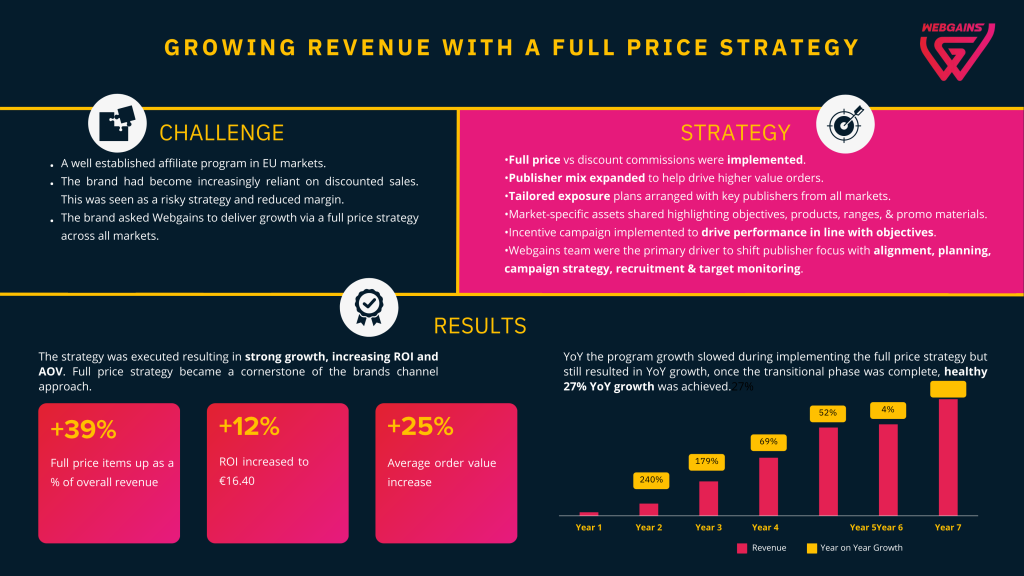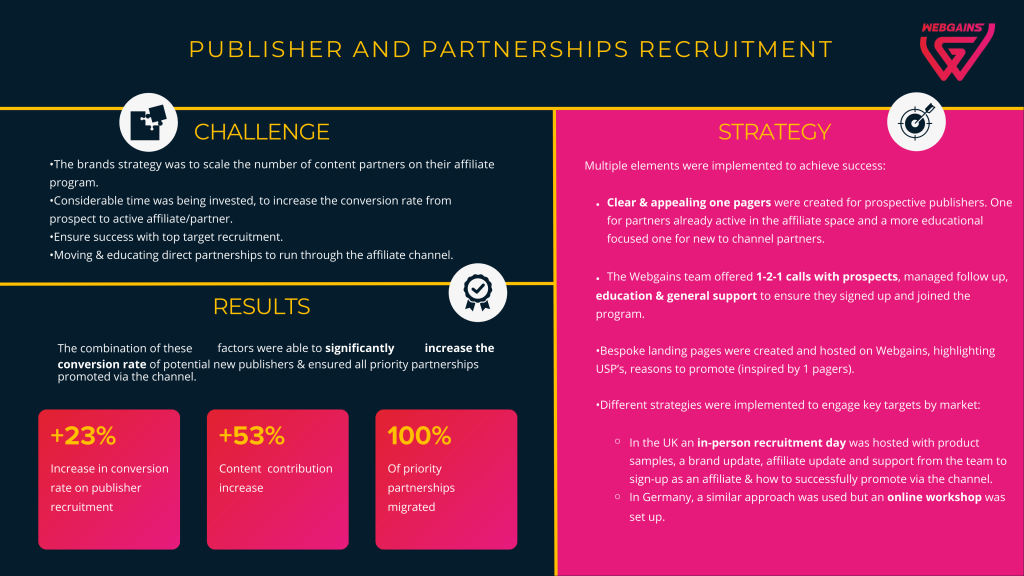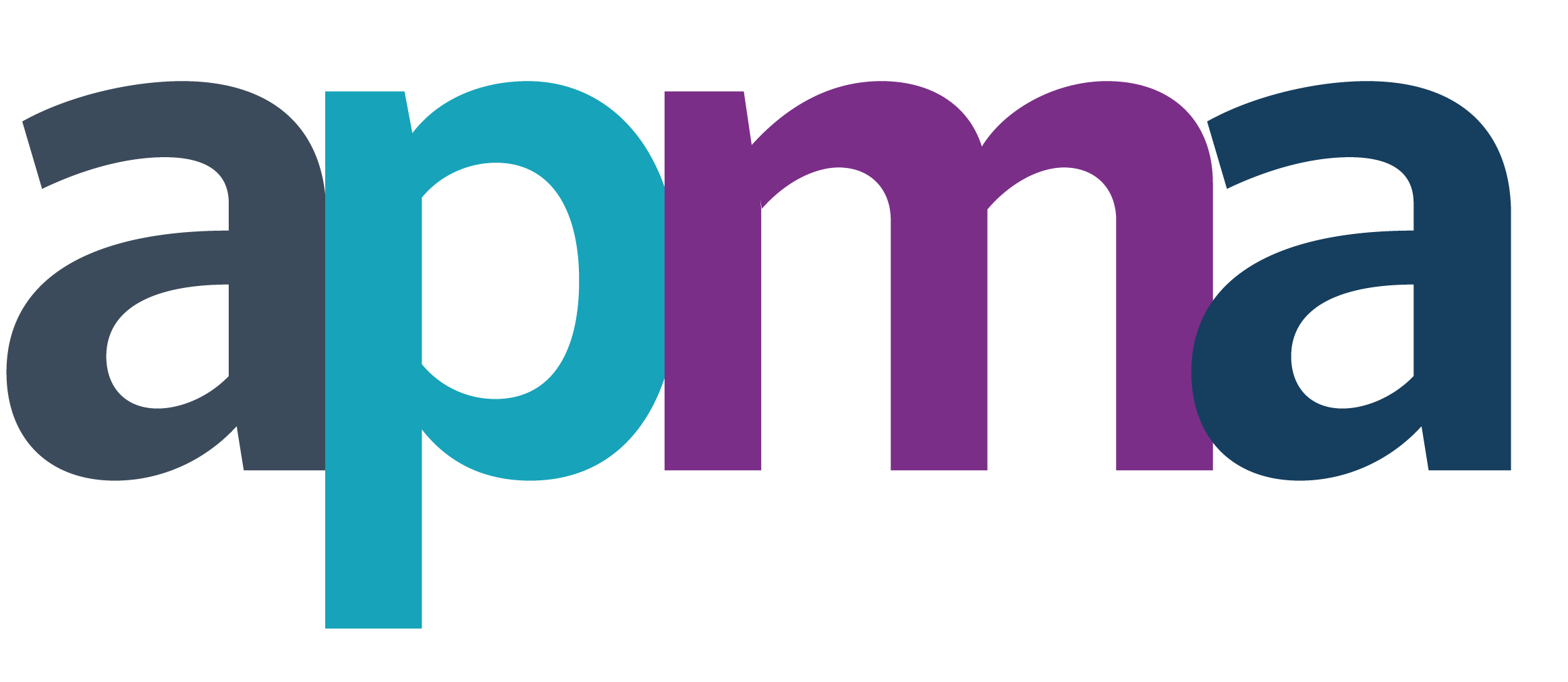
This content has been authored by Andrew North, Director of Client Services at Webgains. Webgains is one of The APMA’s founding members.
Webgains is a world-class affiliate network, supporting affiliates and publishers. They combine cutting-edge technology to kickstart campaigns.
The straight answer is that the time required to successfully manage an affiliate program will vary hugely based on a multitude of factors.
This article will drill into these, providing insight into affiliate program service levels e.g. self-managed, supported or managed, how much a client can lean on their network, and affiliate strategy resource requirements. As well as covering this, I’ll include plenty of actionable tips and best practice.
One key strength of the affiliate channel is that its performance-based origins naturally help deliver a reliable ROI (return on investment) from activity. Affiliate channel ROI also happens to be very strong, stacking up favorably against other marketing channels.
It stands to reason then that the time spent on managing the affiliate channel should correlate directly with the return it generates.
For example, a large, established pan-European brand with multiple programs will likely have a dedicated affiliate team internally to heavily optimise every aspect of the channel. In contrast, a UK-only SME entering the affiliate space for the first time may allocate a portion of their e-commerce manager’s time to the channel. During this time, they may focus only on activating key publishers, for example. The time investment wouldn’t be comparable in terms of hours, but when looking at the return it should be aligned.
Finding the right Service Level
Whether you’re starting an affiliate program for the first time or are a channel veteran, affiliate networks or SaaS providers will offer various service levels to suit. Which one is right for you will depend not only on how much experience you have but also how much time you can dedicate to your program.
Top Tip – If you’re in negotiations with providers for your first affiliate program, ask the network to give you a rough revenue forecast. With sector statistics and your website stats at hand, they should be able to do this, for you to gauge how much time needs to be allocated to the program to manage it.
Key consideration – Network vs SaaS
- Networks can provide a large amount of management, meaning a good portion of the work to drive and grow the affiliate program could be undertaken on your behalf. Dedicated publisher teams also work with publishers to expand the mix but also negotiate specific deals that brands can capitalise on.
- SaaS providers focus heavily on platform and tech; the management of the program may lie more with the client or agency. If there is a lot of experience within the team this can be a great solution. This isn’t set in stone, however, and there may be management options available.
Top Tip – For clients running programs across multiple markets, suppliers will assign local account managers who sit within the key regions who will be able to guide brands to success, give local insight and harness their existing publisher relationships (even translation services). A great option for brands who do not have teams in-market.
Key consideration – Self-managed vs Managed
Networks generally offer these two key service levels. Self-managed setups will allow brands to save on cost, but a supported service is generally the best option as the network will be able to carry out a lot more work on a brand’s behalf including admin.
Key consideration – Agencies
Brands can partner with an affiliate or digital agency that can take control of their program on their behalf. Agencies have in-depth knowledge of the sector and can therefore be a huge help. This does come with an additional cost, so assess what your particular program needs.
Affiliate Strategy
Your affiliate strategy is going to have a big impact on the time required to manage it.
If a brand has a self-managed affiliate program to solely work with a handful of larger partners such as Blue Light Card, TopCashback, Quidco and Skimlinks, a few hours a week to invest would suffice.
However, as someone who has worked in this industry and seen so many brands succeed with more in-depth strategies, I would always recommend investing more in affiliate marketing.
A deeper channel-specific strategy can allow brands to extract a much better return from it. Working with and optimising publishers across the whole customer purchase journey will pay dividends and help create a future proofed affiliate program.
Managing a multi-layered program can be daunting and most certainly requires more time investment. Just make sure that the level of granularity stays in line with performance.
Top Tip – Your network, platform, agency or partner has a wealth of valuable benchmarking data across all key client verticals which can be used to quantify all new publishers or publisher types as well as scope for optimisation with relative accuracy. This is valuable information to fully consider expanding your affiliate program. At Webgains, this forms a key pilar of our approach, with all key opportunities and recommendations being fully forecasted.
To put this into some context, below there is a case study showcasing the assistance a network can provide brands to implement shift in affiliate strategy.

Key consideration – Partnerships
It would be an oversight to not mention partnerships at this point. it’s become commonplace to run them through the channel, benefiting from reliable tracking, simple payment solutions, reporting and extra support from providers. Partnerships certainly require more time investment, partner education on the channel and brand alignment but is generally seen as a more efficient way to manage than directly.
From my time working at a network, strategy & partnerships are certainly areas where a network or platform can significantly help as these are time consuming and require experience to navigate successfully. Reducing brand time investment in nurturing publisher relationships by working on their brands’ behalf.
I have numerous examples of suppliers taking on recruitment of new partners including onboarding events, educational sessions, auditing, performance monitoring & optimisation.
Top Tip – If something is not in your suppliers’ SLA, it doesn’t automatically mean it is not feasible. Ask, and take it from there
The below case study showcases the support provided by a network to help scale and onboard content partners to an affiliate program.

Best practice checklist
Below I have listed five bullet points detailing the most vital tactics to consider for working with and managing your publisher partners to create and sustain a successful affiliate program.
- Weekly performance monitoring
- Monthly publisher movers and shakers review
- Monthly publisher communications including generic updates on top products; promotional activity; and top 10 publisher 1-2-1 communication focused on optimisation
- Monthly publisher recruitment
- Weekly or monthly administrative tasks e.g commission management, validations
In summary, the affiliate channel is one of the best there is for driving revenue at a healthy and consistent ROI. There are many factors that impact the time requirement from a brand perspective to manage the channel; chiefly, the service level provided by the network/SaaS provider, the internal expertise you have, and the results that the channel delivers.
Remember, suppliers will almost always offer various solutions to enable all brands to successfully run their affiliate programs in line with their goals and the time they are able to allocate to it.
About the Author:
Andrew North has a decade of experience in the affiliate marketing sector, the majority of which at Webgains. Over this time, he has covered every role within account management, working with clients from global brands to new startups. The experience gained from working across such diverse brands has given him a holistic view of the channel and strong publisher relationships across the board which is now being applied to drive strategy & performance in his current role as Client Services Director at Webgains.
To find out more about Webgains and to get in touch with them please visit their website.


